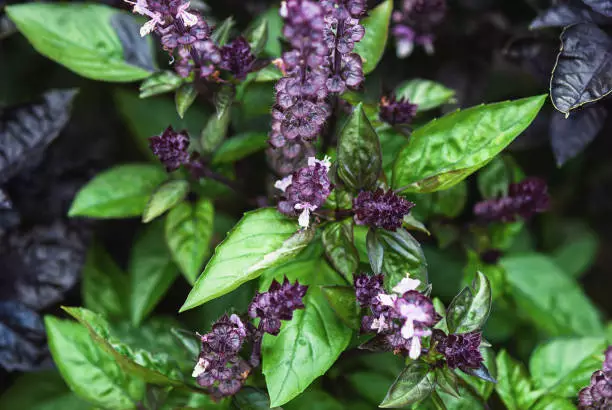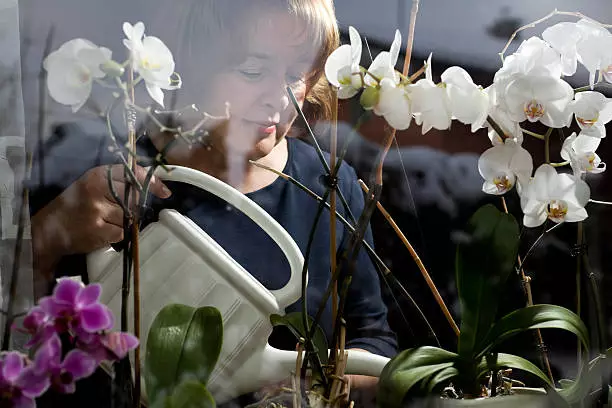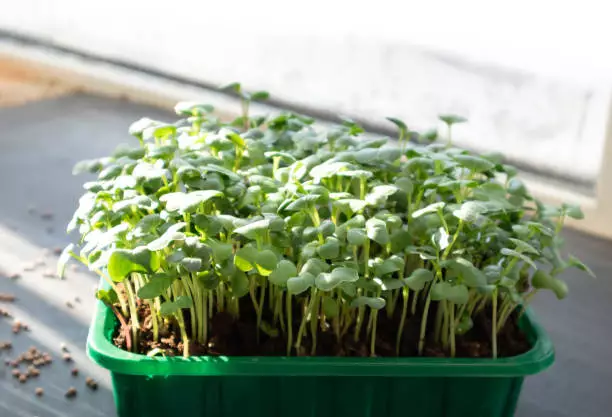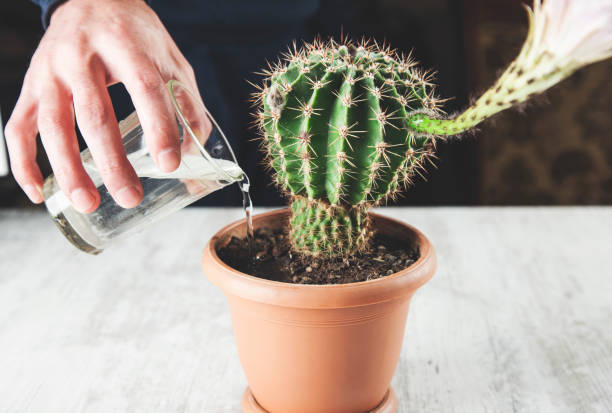Calathea plants are known for their stunning foliage, which features intricate patterns and vibrant colors. However, one common issue that many Calathea owners face is drooping leaves. This can be a frustrating problem, as it not only detracts from the plant’s beauty but can also be a sign of underlying issues.
One of the most common reasons for Calathea leaves drooping is underwatering. Calathea plants require consistently moist soil, and if they are not watered frequently enough, their leaves may start to droop. Another possible cause of drooping leaves is overwatering, which can lead to root rot. This can be particularly problematic if the plant is in a pot without proper drainage, as excess water can become trapped in the soil and suffocate the roots.
If your Calathea leaves are drooping, it is important to identify the underlying cause and address it promptly. This may involve adjusting your watering routine, repotting the plant, or addressing issues with humidity or temperature. By understanding the causes of Calathea leaves drooping and taking steps to address them, you can help your plant thrive and continue to enjoy its stunning foliage.
Understanding Calathea Plants
Calathea plants are tropical houseplants that are known for their striking foliage. They are native to South America and are often grown for their large, colorful leaves. However, one common problem that many Calathea owners face is drooping leaves.
There are several reasons why Calathea leaves may droop. One of the most common causes is underwatering. Calathea plants require consistent moisture, and if they are not watered frequently enough, their leaves may droop. On the other hand, overwatering can also cause Calathea leaves to droop. When the soil is constantly wet, the roots can become waterlogged, which can lead to root rot and other problems.
Another common cause of drooping Calathea leaves is low humidity. Calathea plants thrive in environments with high humidity, and if the air is too dry, their leaves may droop. In addition, Calathea plants are sensitive to temperature changes and drafts, which can also cause their leaves to droop.
To fix drooping Calathea leaves, it is important to identify the underlying cause. If the plant is underwatered, it should be watered more frequently. On the other hand, if the plant is overwatered, it may be necessary to repot the plant in fresh, well-draining soil. Increasing humidity levels can also help to fix drooping Calathea leaves. Placing a humidifier near the plant or grouping it with other plants can help to increase the humidity in the air.
Overall, Calathea plants are beautiful, but they require specific care to thrive. By understanding the common causes of drooping leaves and how to fix them, Calathea owners can keep their plants healthy and vibrant.
Causes of Calathea Leaves Drooping
Calathea plants are known for their beautiful and vibrant leaves, but sometimes they can start to droop. There are several reasons why this might happen, including:
Underwatering
Calathea plants require consistent moisture, and if they are not watered enough, their leaves will start to droop. This is because the plant is trying to conserve water by reducing the surface area of its leaves.
Overwatering
On the other hand, overwatering can also cause Calathea leaves to droop. When the plant is watered too frequently or if the soil is not well-draining, the roots can become waterlogged and start to rot. This can lead to a lack of oxygen and nutrients, which can cause the leaves to droop.
Low Humidity
Calathea plants are native to tropical regions and require high humidity to thrive. If the air in the room is too dry, the leaves can start to droop and curl. This is because the plant is losing moisture faster than it can absorb it from the air.
Poor Light Conditions
Calathea plants prefer bright, indirect light. If they are placed in a location with too little light, the leaves can start to droop as they try to reach for more light. However, if they are placed in direct sunlight, the leaves can become scorched and damaged, which can also cause them to droop.
Temperature Stress
Calathea plants are sensitive to temperature changes and can start to droop if they are exposed to extreme heat or cold. They prefer temperatures between 65-80°F (18-27°C) and can be damaged if the temperature drops below 60°F (15°C).
Inadequate Fertilization
Calathea plants require regular fertilization to maintain their vibrant leaves. If they are not fertilized enough, the leaves can start to droop and lose their color. However, if they are over-fertilized, the roots can become burned and damaged, which can also cause the leaves to droop.
In summary, there are several reasons why Calathea leaves might start to droop, including underwatering, overwatering, low humidity, poor light conditions, temperature stress, and inadequate fertilization. By understanding these causes, it is possible to take the necessary steps to fix the problem and restore the plant to its full beauty.
Fixes for Drooping Calathea Leaves
Calathea plants are known for their beautiful and unique foliage, but drooping leaves can be a sign of stress or improper care. Here are some fixes to help revive your drooping Calathea leaves.
Proper Watering Techniques
Overwatering or underwatering can both cause Calathea leaves to droop. To ensure proper watering, allow the top inch of soil to dry out before watering again. Use a well-draining potting mix and make sure the pot has drainage holes to prevent water from sitting in the soil. When watering, pour water until it drains out the bottom of the pot, then discard the excess water.
Humidity Control
Calathea plants thrive in high-humidity environments, so low humidity levels can cause leaves to droop. To increase humidity, place a tray of water near the plant or use a humidifier. Grouping plants together can also help increase humidity levels.
Lighting Adjustments
Calathea plants prefer bright, indirect light, but direct sunlight can cause leaves to droop and scorch. If your plant is in direct sunlight, move it to a location with more shade. If the plant is not getting enough light, move it closer to a window or provide additional artificial light.
Temperature Regulation
Calathea plants prefer temperatures between 65-80°F (18-27°C). Temperatures outside of this range can cause stress and drooping leaves. Avoid placing the plant near drafts or heating/cooling vents. If the plant is in a cold location, move it to a warmer spot. If it is in a hot location, move it to a cooler spot.
Fertilization Tips
Underfertilization or overfertilization can both cause drooping leaves. Use a balanced, water-soluble fertilizer every 2-4 weeks during the growing season (spring and summer). Follow the instructions on the fertilizer package and do not exceed the recommended dosage.
By following these fixes, you can help revive your drooping Calathea leaves and keep your plant healthy and thriving.
Frequently Asked Questions
What are some common causes of Calathea leaves drooping?
Calathea leaves may droop due to underwatering, overwatering, low humidity, or exposure to direct sunlight. In some cases, pests or diseases may also cause the leaves to droop.
What are some fixes for Calathea leaves drooping?
To fix Calathea leaves drooping, it is important to identify the underlying cause. If the plant is underwatered, watering it thoroughly and regularly can help. If overwatering is the issue, reducing watering frequency and ensuring proper drainage can help. Increasing humidity levels around the plant can also be helpful. If the plant is exposed to direct sunlight, moving it to a shadier location can help. In some cases, pruning affected leaves or treating the plant for pests or diseases may be necessary.
Why do Calathea leaves droop at night?
Calathea leaves droop at night as part of their natural circadian rhythm. This is a normal process and is not a cause for concern.
How can I prevent Calathea leaves from drooping after repotting?
To prevent Calathea leaves from drooping after repotting, it is important to ensure that the plant is not overwatered, as this can stress the roots. It is also important to avoid exposing the plant to direct sunlight or low humidity levels. Providing the plant with a suitable growing medium and ensuring proper drainage can also be helpful.
Why do Calathea stems bend or droop?
Calathea stems may bend or droop due to overwatering, underwatering, or exposure to direct sunlight. In some cases, pests or diseases may also cause the stems to bend or droop.
What are some signs of overwatering in a Calathea plant?
Signs of overwatering in a Calathea plant may include yellowing leaves, wilting, root rot, and a foul odor. It is important to reduce watering frequency and ensure proper drainage if overwatering is suspected.
References
- University of Georgia Cooperative Extension. (2019). Growing onions in the home garden. Retrieved from https://secure.caes.uga.edu/extension/publications/files/pdf/B%201318_6.PDF
- Chase, A. R. (2018). Calathea. (Foliage Note No. 45). University of Florida Institute of Food and Agricultural Sciences Mid-Florida Research & Education Center. Retrieved from https://mrec.ifas.ufl.edu/foliage/folnotes/calathea.htm



